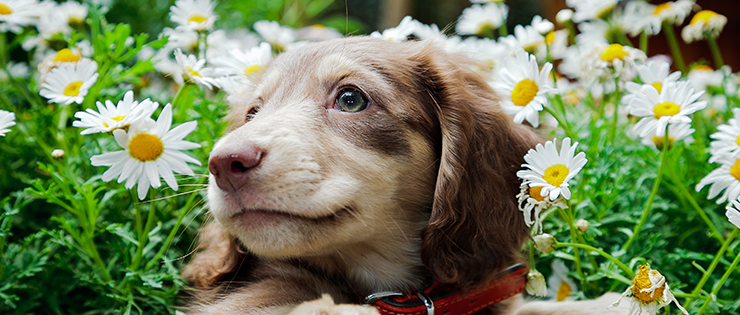
If dogs have 300 million scent receptors, compared to our 5 million, then there can be no doubt that a sense of smell is important for a dog. If you can smell your dinner cooking in the kitchen, then a dog can smell it from the other side of the MSG stadium. It's incredible how superior dogs’ senses are over ours, and for this reason, it is crucial that we provide them with the opportunity to use them.
Living in the same home and the same backyard can understandably become monotonous for a dog or cat; with the same pee-mails, the usual shrubs and predictable bird visits. So, unless your dog comes to work with you and spends most of their days thoroughly enriched, then a sensory garden may be a great way to keep your pet entertained for a few hours. Additionally, if your dog tends to indiscriminately dig up and rip apart your backyard, then providing them with an area where they can freely explore, may reduce their destructive motivations*. Dogs who live in homes with small backyards and even dogs in shelter environments will be especially appreciative of such a wonderful exploratory experience.
Tips to creating a sensory garden
- Create an area where there is open access to resting in sunshine, as well as shade.
- Do some testing with your pet. Select safe plants and smells such as herbs and some flowered natives and see what your pet gravitates to, or what they spend the most time at.
- Plant trees that are bushy, that your pet can move through, scratching their backs and sniffing the dense vegetation for passers-by from the night before. Bamboo and rosemary can be great for this.
- Plants of different textures and heights are beneficial, for they capture different scents and can be more interesting to touch.
- Set up a sand pit in a shaded area and a shallow watered tub in the sunny area. This is especially favourable to dogs, who tend to prefer water. If you have both cats and dogs using this space, be mindful that the sandpit may devolve into an enlarged litter tray for your cat.
- Specialist herbs can be planted for pets such as catnip, wheatgrass, St John’s wort, lavender and valerian. All of these are generally safe for pets and can have a relaxing affect. Always check that the plants you provide are safe.
- Garden beds that are more precious to you may be better fenced off, raised or potted.
The best way to design the purrfect sensory garden is to observe your pet and note what they love. They may have preferences for plants and exploratory experiences. You may want to design a garden where you can hide their food, to keep them even more entertained. So, whatever your garden looks like, make sure it is equally designed by your pet. My sensory garden includes lots of rosemary, hanging gums and various walking surfaces. Chester loves grasses, where-as Alma prefers herbs. And Cash, well he is just happy to be able to explore anything he can with his new best mates. It is such a joy to watch your beloved pets happy and playing in your garden, knowing that they are mentally and physically engaged. So, without further ado, get digging!
*If your dog is destructive, it is imperative that you consider they are experiencing an anxiety disorder called Separation Related Behaviour. Please feel free to email me if this is the case - laurav.com.au